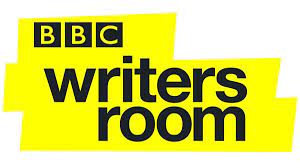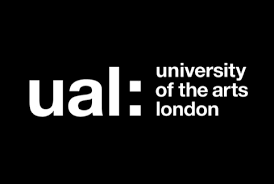Hi There,
This fortnight, some thoughts about current Sky Atlantic / Now TV 6 part serial / mini-series THE WHITE LOTUS – which I just binged over three evenings – what I love about it and some lessons & inspirations to take from it for your own screenwriting. At times here I have been a little vague because, if you haven’t yet watched and would like to, I have tried to avoid spoilers.
THE WHITE LOTUS – 6 x 1 hour mini-series, written and directed by MIKE WHITE.
CHARACTER
So many brilliant, entertaining, flawed characters all of whom have a weakness, a problem, played out through the dynamics of their relationships with the other characters. I think these flaws – creating characters with a lack, with something they need – are such a key to writing compelling characters The writing moves so skillfully between the perspective of about 15 principal characters, causing us to empathise with the views and needs of all of them at different times – even though (arguably) only 3 or 4 of them are objectively likeable. It is the dynamics and tensions between the characters that brings them and their stories all alive. And to keep these 15 balls all up in the air throughout these 6 hours of drama is some achievement.
FORMAT / SETTING / STRUCTURE
The format and the setting are such a great arena in which to explore these characters and their needs, desires and weaknesses. The setting – an expensive, luxury Hawaii beach resort hotel – gives you a forced hierarchy – the uncomfortable and artificial relationships between staff and guests paying a lot of money for the privilege of being waited on obsequiously by the staff. The artificial code of these formalised relationships is richly dramatic. Because it’s artificial, there is rich potential for subtext and tensions.
The time span / structure – that the six episodes cover a week’s holiday – gives the show a clear structural shape. And each of the guests have different reasons and agendas for their holiday – a family trying to reconnect; a honeymooning couple; a grieving single woman who has come to scatter her mother’s ashes. Again, the time-limited, artificial environment of a holiday is hugely dramatically rich. Hotels are a traditional staple of drama and comedy series (Fawlty Towers, The Grand¸ Room 104, Crossroads, Hotel Babylon, etc) – a great environment for throwing together unlikely combinations of characters in a formally hierarchical setting.
The specificity of Hawaii as a setting is also an important element of the story, tapping into the themes Mike White is exploring.
The show opens with an excellent (but narratively quite conventional) teaser before taking us back to a week earlier. This teaser works brilliantly though in encouraging us to keep asking a big question of the overall story – only resolved at the end of the series where this teaser is reprised.
SCENES
I was struck by just how many brilliantly written, wonderfully constructed, playful scenes there are in the series. Scenes that almost work as stand-alone mini-dramas in their own right, scenes that go on a clear narrative journey, significantly changing and ramping up the story stakes. For instance, the long dialogue scene between Rachel and Nicole. A scene that starts as one thing and becomes something else entirely. Several of the Rachel / Shane scenes – but particularly their hotel room confrontation scene in episode 6. Scenes that go on a twisting journey, scenes that lead to other scenes, escalating and intensifying the drama. Like Jimmy McGovern’s TIME, in THE WHITE LOTUS, there are countless scenes that are inspiring examples of how scenes can work at their absolute best in the way they both reveal character and change and advance the story. The examples I have given above are two-handers – but some of the Mossbacher family scenes (between 5 characters) are brilliant instances of multi-character, family dynamics comically dramatized.
So much excellent scene construction – eg the lesson of going out of a scene on a hook, a question, thereby maintaining and intensifying the momentum and tension in the storytelling (eg the scene that ended with the line, ‘I can’t give it to you but I can help you take it…’)
So often it’s what isn’t said that makes a scene powerful – giving the audience the pleasure of making their own interpretation of the subtext.
PLOT / SET-PIECES
As above the way one scene leads to another, how each scene is a building block in a bigger developing story all within its own very particular set of story values in this artificial world is so impressive.
And the way some of the episodes build to a richly anticipated set piece – the boat trip in ep 3, the major incident in episode 5. (To avoid spoilers I don’t want to be any more specific. But if you’ve watched the show, you will instantly know what I’m referring to.) This ep 5 incident is brilliantly set-up in the agonising and machinations between characters.
The way the story cuts between different character strands, anticipating a clash of characters is a great example of cutting between scenes to generate narrative tension.
The show is predicated on characters who all want something from each other.
The scripts are brilliant in the way they weave together and connect the different story strands – sometimes thematically, sometimes more directly narratively (eg the ep.3 boat trip).
TONE
A tone that feels utterly distinctive and entirely confident of what it is. The show is darkly comic. And its comedy is such a strength – so many very funny, laugh-out-loud moments prompted by clashes between different characters with different agendas through misunderstandings, miscommunications, secrets and clashing character agendas – so well-observed, so full of rich, character-driven friction. The idyllic Hawaii beach setting gives the show a very particular feel – paradise going sour.
MESSAGE / AGENDA
Underneath the comic surface this really has something powerful and troubling to say – about money, sexual politics, privilege and other things. Some of the scenes among the family are also among the best dramatisations of ‘wokeness’, ‘cancel culture’, of contemporary inter-generational friction within families and the wider world. The Hawaii setting also enables a deeper debate about capitalism and the destruction of indigenous cultures (as played out in the Kai / Paula strand). As well as being thoroughly entertaining and comically effective, I found the series thought-provoking and troubling – a brilliant critique of inequality, privilege and of issues of political and social responsibility.
MIKE WHITE
The 6 part series is written and directed by Mike White. To have written both SCHOOL OF ROCK and THE WHITE LOTUS is some achievement. The two shows are so totally different but both, IMO, brilliant examples of their genre. I’ve also seen his excellent film, BRAD’S STATUS. I’m now off to check out the rest of his oeuvre!
The next newsletter will be on Friday Sept 17th.
Best wishes
Phil
PHILIP SHELLEY
Twitter: @PhilipShelley1
Sept 3rd 2021






















